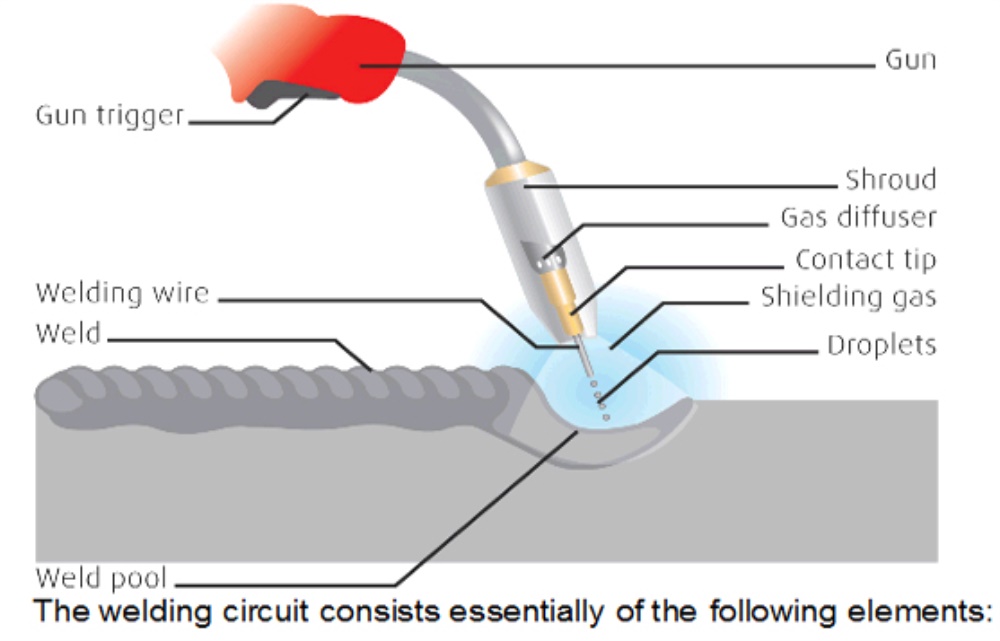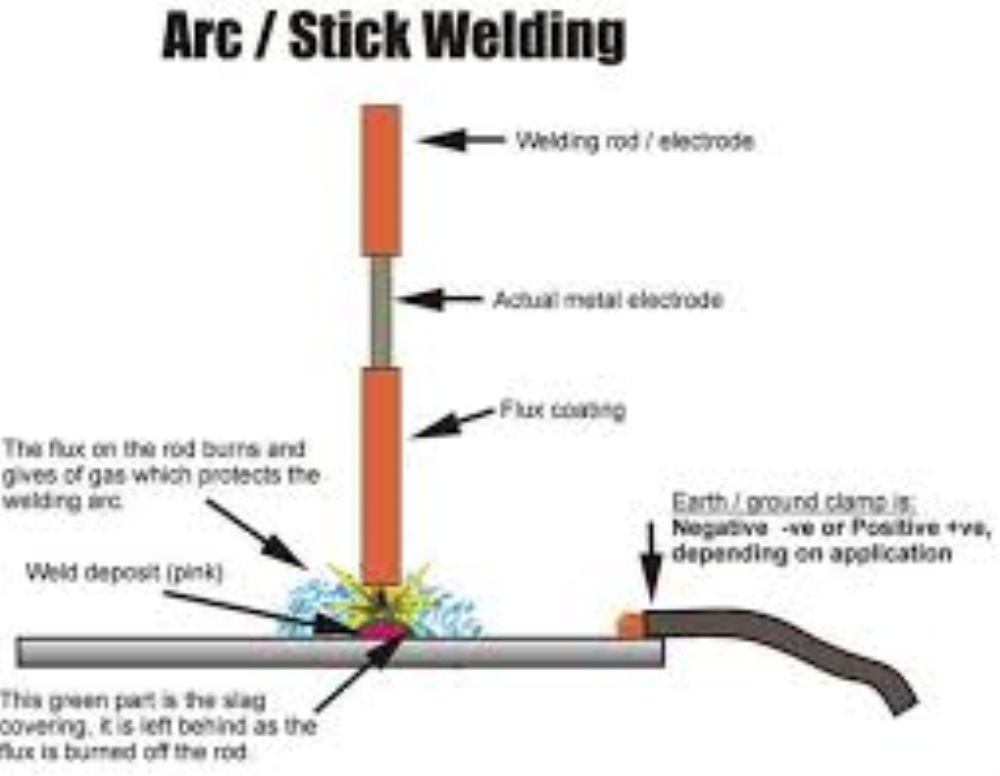Types Of Welding Processes

MIG (Metal Inert Gas) Welding or GMAW (Gas Metal Arc Welding):
The concept of combining two pieces of metal together with a wire that is connected to an electrode current, is referred to as Metal Inert Gas (MIG) welding. In this type of welding process, a shielded gas is used along the wire electrode, which heats up the two metals to be joined. A constant voltage and direct current power source is required for this method, and this is the most common industrial welding process. The MIG or GMAW process is suitable for fusing mild steel, stainless-steel as well as aluminium.
Arc Welding or SMAW (Shielded Metal Arc Welding):
Arc welding is also called as Shielded Metal Arc welding, or simply referred to as ‘Stick’. This is the most basic of all welding types. The welding stick uses electric current to form an electric arc between the stick and the metals to be joined. To weld iron and steel, this type of welding is often used in the construction of steel structures and in industrial fabrication. Stick welding can be used for manufacturing, construction and repair work.
TIG (Tungsten Inert Gas) or GTAW (Gas Tungsten Arc Welding):
A non-consumable tungsten electrode is used in this type of welding process. This tungsten electrode is made use of to heat the base metal and create a molten weld puddle. By melting two pieces of metal together, an autogenous weld can be created. For this type of welding, the welder needs to have a lot of expertise as it’s a very complex process. This welding process is employed to carry out high-quality work when a superior standard finish is required, without making use of excessive clean up by sanding or grinding.
FCAW (Flux-Cored Arc Welding):
As an alternative to shield welding, Flux-cored Arc Welding was developed. This welding process is quite similar to MIG or GMAW process, except for the fact that in FCAW a special tubular wire filled with flux is used and shielding gas is not always needed, depending on the filler. This type of welding is well-known for being extremely inexpensive and easy to learn. However, there are several limitations in its applications and the results are not often aesthetically pleasing as some of the other welding methods. The semi-automatic arc is often used in construction projects, thanks to its high welding speed and portability.




